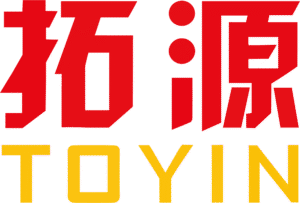
Определение в одном предложении
RoHS (Restriction of Hazardous Substances) is a regulatory directive that limits the use of specific hazardous materials in electrical and electronic equipment to protect human health and the environment, especially within the European Union (EU RoHS Directive).
Подробное объяснение
RoHS was first introduced by the European Union in 2006 and has since become a global benchmark for product safety and environmental responsibility. The directive restricts ten hazardous substances—including lead, mercury, cadmium, hexavalent chromium, polybrominated biphenyls (PBB), polybrominated diphenyl ethers (PBDE), and four phthalates (DEHP, BBP, DBP, DIBP)—in all homogeneous materials of electrical and electronic equipment (EEE). The maximum allowed concentrations are 0.1% for most substances and 0.01% for cadmium. RoHS compliance is now required in many regions beyond the EU, such as China, the UAE, and several U.S. states (HQTS Guide).
For manufacturers, RoHS compliance means evaluating every material and component, collecting supplier declarations, conducting laboratory testing, and maintaining technical documentation. Products that meet RoHS requirements are eligible for CE marking, which is mandatory for EEE sold in the EU.
Key Components of RoHS Compliance
- Restricted Substances: Lead, mercury, cadmium, hexavalent chromium, PBB, PBDE, DEHP, BBP, DBP, DIBP.
- Scope: Applies to all electrical and electronic equipment, including consumer electronics, appliances, lighting, toys, and industrial tools.
- Compliance Process:
- Material Assessment: Break down products into homogeneous materials and identify potential risks.
- Supplier Declarations: Obtain Certificates of Conformity (CoC) from suppliers for all components.
- Testing: Use methods like XRF and GC-MS to verify substance concentrations.
- Documentation: Compile technical files, including test reports and risk assessments.
- Declaration of Conformity: Issue a signed statement certifying compliance.
- Маркировка CE: Affix the CE mark to compliant products (RoHS Guide).
Real-World Application: RoHS in Acrylic Products
Acrylic products—such as display stands, protective covers, and storage boxes—are widely used in retail, office, and industrial settings. When these products are part of or used with electronic equipment, they must also comply with RoHS if sold in the EU or other regulated markets. Compliance focuses on ensuring that all pigments, additives, and plasticizers in the acrylic material are below the RoHS limits.
Example: Toyin Acrylic Products Co., Ltd. (TOYIN) ensures RoHS compliance by:
- Sourcing RoHS-compliant raw materials for all custom acrylic displays and enclosures.
- Conducting third-party laboratory testing for restricted substances in pigments and additives.
- Providing customers with Certificates of Conformity and technical documentation for EU-bound orders.
- Supporting global brands and retailers with up-to-date compliance reports and fast, reliable delivery.
This approach not only meets legal requirements but also enhances product safety and marketability for international clients.
Смежные понятия
- REACH: A broader EU regulation covering all chemical substances, not just those in electronics. Learn more
- WEEE: The Waste Electrical and Electronic Equipment Directive, which focuses on recycling and proper disposal of electronics. Learn more
- Маркировка CE: Indicates conformity with EU health, safety, and environmental protection standards.
- Declaration of Conformity (DoC): A formal statement by the manufacturer confirming RoHS compliance.
Visual Aids and Further Reading
- UL Yellow Card for Acrylic Compliance
- RoHS Product Categories Infographic
- Official EU RoHS Directive
Looking for RoHS-compliant custom acrylic solutions? Explore TOYIN’s global acrylic manufacturing and compliance services


